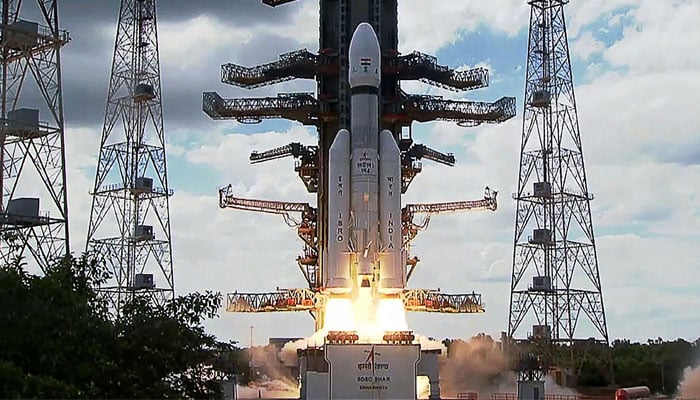On Saturday, India’s latest space mission, Chandrayaan-3, entered the Moon’s orbit ahead of the country’s second attempted lunar landing, as its low-cost space program strives to reach new heights.
Chandrayaan-3, entered the Moon’s orbit
The world’s most populous country has a relatively low-budget aerospace program that is rapidly approaching the milestones established by global space powers. Only Russia, the US, and China have previously accomplished a controlled landing on the lunar surface.
The Indian Space Research Organization (ISRO) confirmed that Chandrayaan-3, which translates to “Mooncraft” in Sanskrit, had been “successfully inserted into lunar orbit” more than three weeks after launch.
Chandrayaan-3 Mission:
The spacecraft has covered about two-thirds of the distance to the moon.Lunar Orbit Injection (LOI) set for Aug 5, 2023, around 19:00 Hrs. IST. pic.twitter.com/MhIOE65w3V
— ISRO (@isro) August 4, 2023
If everything goes as planned, the current mission will safely land near the Moon’s little-explored south pole between August 23 and 24.
India’s previous attempt failed four years ago when ground control lost contact moments before landing.
ISRO developed Chandrayaan-3, which includes a lander module named Vikram, which means “valour” in Sanskrit, and a rover named Pragyan, which means “wisdom” in Sanskrit.
The mission costs $74.6 million, which is significantly less than that of other countries and a testament to India’s frugal space engineering.
According to experts, India can keep costs low by copying and adapting existing space technology, as well as by employing a large number of highly skilled engineers who earn a fraction of what their foreign counterparts do.
‘A shining moment’
The Chandrayaan-3 spacecraft arrived at the Moon much later than the manned Apollo missions of the 1960s and 1970s, which took only a few days.
The Indian rocket used was much less powerful than the US Saturn V, so the probe orbited the Earth five or six times elliptically to gain speed before embarking on a month-long lunar trajectory.
If the landing goes well, the rover will leave Vikram and explore the nearby lunar area, collecting images that will be sent back to Earth for analysis. The rover’s mission lasts one lunar day (14 Earth days).
ISRO chief S. Somanath stated that his engineers carefully studied data from the previous failed mission and worked hard to fix the flaws.
Since sending a probe into orbit around the Moon in 2008, India’s space program has grown significantly in size and momentum.
It was the first Asian country to launch a satellite into orbit around Mars in 2014, and three years later, the ISRO launched 104 satellites in a single mission.
By next year, the ISRO’s Gaganyaan (“Skycraft”) program plans to launch a three-day manned mission into Earth’s orbit.
India is also working to increase its 2% share of the global commercial space market by launching private payloads into orbit at a fraction of the cost of competitors.
To read our blog on “Moon has active volcano on its dark side, 2023 study reveal,” click here
